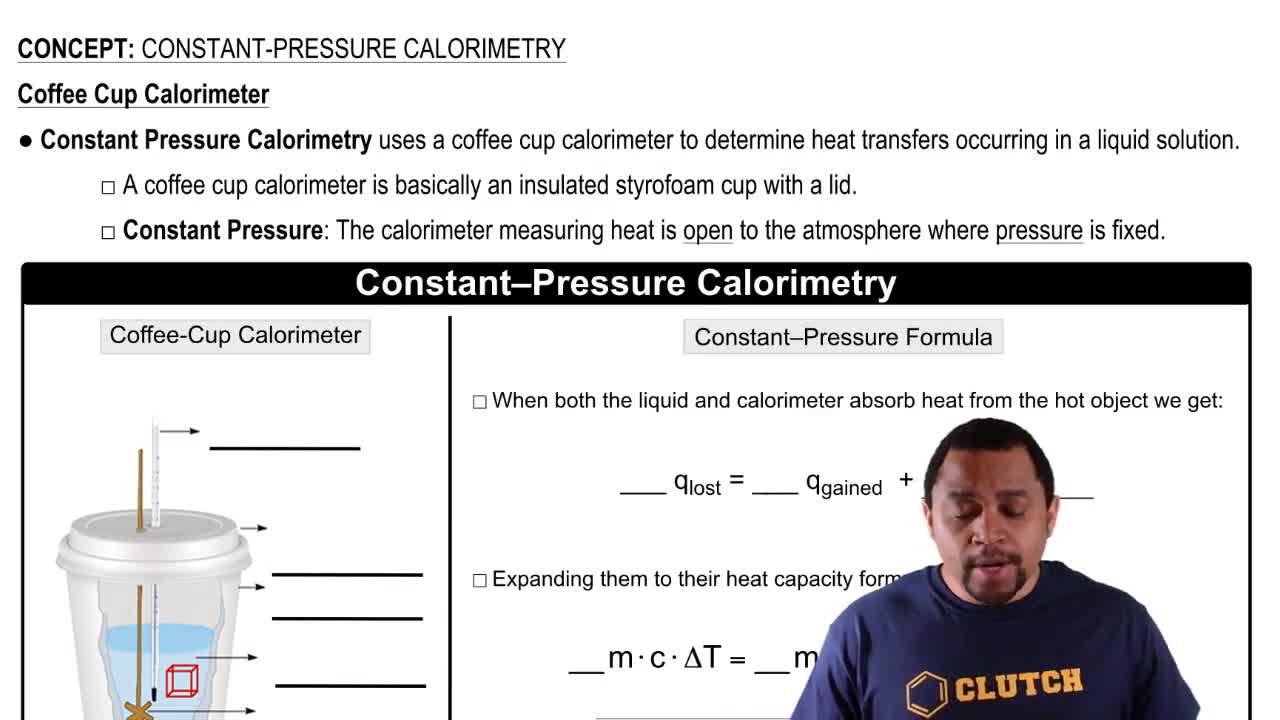The specific heat of octane, C8H18(l), is 2.22 J•g/K. (b) Which will require more heat, increasing the temperature of 1 mol of C8H18(l), by a certain amount or increasing the temperature of 1 mol of H2O(l) by the same amount?
When a 6.50-g sample of solid sodium hydroxide dissolves in 100.0 g of water in a coffee-cup calorimeter (Figure 5.18), the temperature rises from 21.6 to 37.8 °C (a) Calculate the quantity of heat (in kJ) released in the reaction.
 Verified step by step guidance
Verified step by step guidance
Verified Solution
Key Concepts
Heat Transfer and Calorimetry

Specific Heat Capacity

Dissolution and Exothermic Reactions

Consider the data about gold metal in Exercise 5.26(b). (b) Suppose that the same amount of heat is added to two 10.0-g blocks of metal, both initially at the same temperature. One block is gold metal, and one is iron metal. Which block will have the greater rise in temperature after the addition of the heat?
Consider the data about gold metal in Exercise 5.26(b). (c) What is the molar heat capacity of Au(s)?
When a 6.50-g sample of solid sodium hydroxide dissolves in 100.0 g of water in a coffee-cup calorimeter (Figure 5.18), the temperature rises from 21.6 to 37.8 °C (b) Using your result from part (a), calculate H (in kJ/mol KOH) for the solution process. Assume that the specific heat of the solution is the same as that of pure water.
(b) Is this process endothermic or exothermic?
A 1.50-g sample of quinone (C6H4O2) is burned in a bomb calorimeter whose total heat capacity is 8.500 kJ/°C. The temperature of the calorimeter increases from 25.00 to 29.49°C. (b) What is the heat of combustion per gram of quinone and per mole of quinone?
